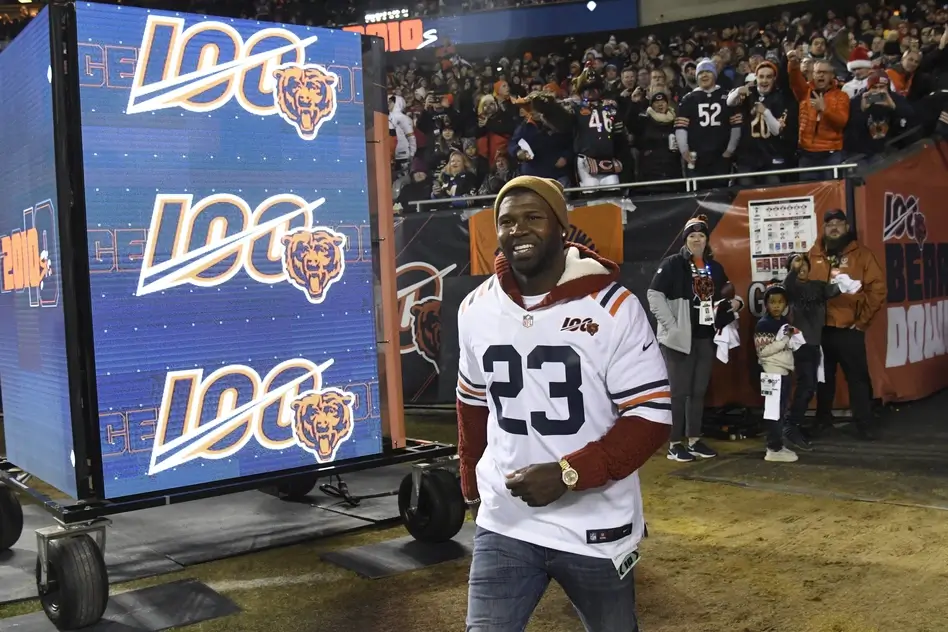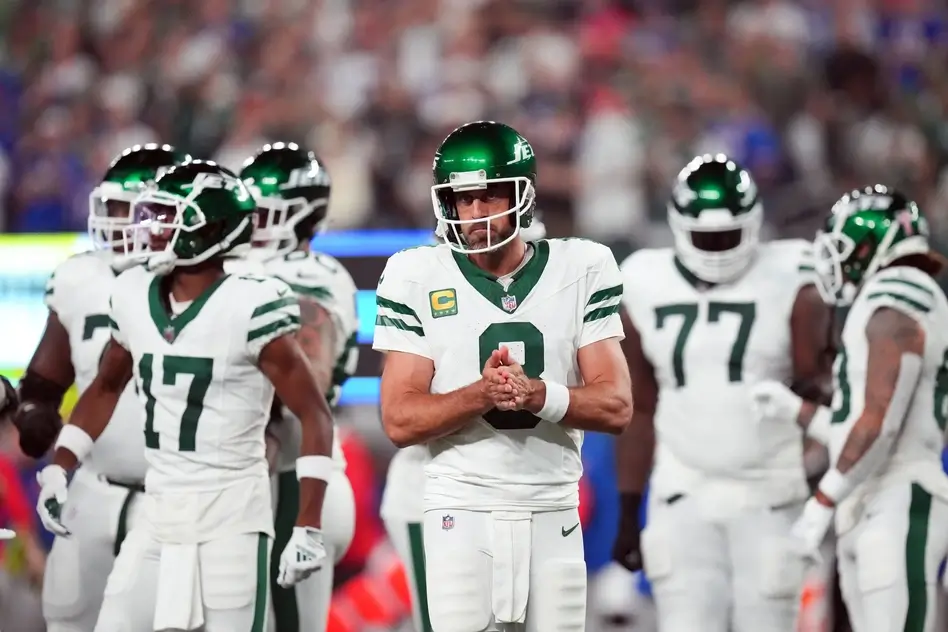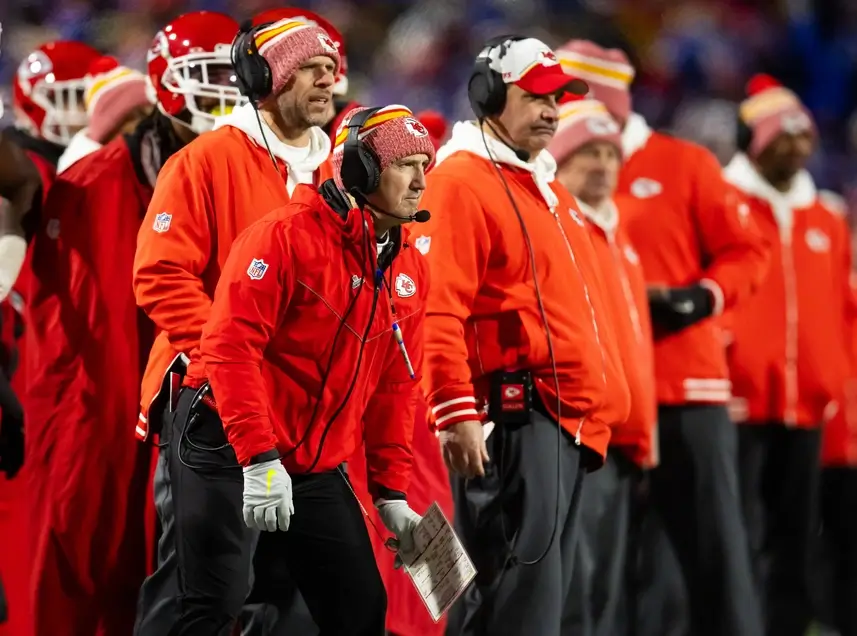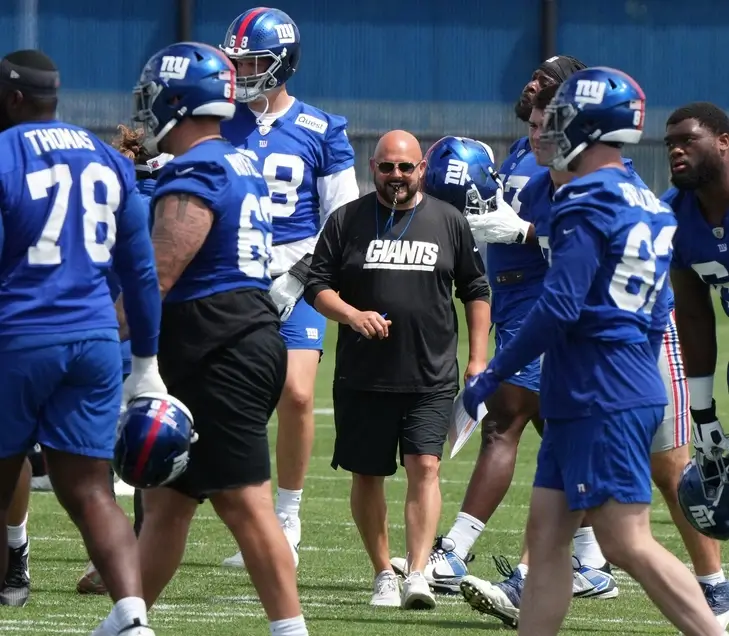Since John Lynch assumed his role as 49ers GM in the Spring of 2017, the San Francisco 49ers have made two big moves in trying to find the Patrick Willis replacement the defence so badly needed after Willis’ surprise retirement in 2015.
The first move was to draft Reuben Foster out of Alabama in 2017. Foster, who was highly touted coming out of college, showed flashes of brilliance for the 49ers before being cut in the winter of 2018 due to a litany of off-the-field character issues.
The second move was signing Kwon Alexander in free agency during the summer of 2019. Alexander, who had put a good play on tape for the Tampa Bay Buccaneers, was given a big payday by Lynch and co. to assume the role of the leader in the 49er front 7. However, Alexander was just coming off a nasty torn ACL and would come to miss half of the 49ers 2019/20 season with a torn pectoral.
Whilst Foster and Alexander were missing game time for different issues, it was former BYU linebacker and 3rd round pick Fred Warner who was emerging as the leader of the 49er defence.
The 2019/20 season saw the San Francisco defence become one of the best in the NFL. The Niners ranked 2nd overall in total defence and first in passing defence, allowing just 281.8 yards per game.
Amongst the earth-shattering quality of the defensive line and the complete lockdown ability of the secondary was Fred Warner’s leadership located at the heart of the defence.
‘I was at home, waiting for him to get on Xbox with me, and he didn’t leave here until 5 pm, and it was our off day.’ That anecdote came from 49ers rookie and star d-lineman Nick Bosa. This quote just goes to show Warner’s dedication to his craft and how seriously he takes his role as a leader in only his second season.
On the field, Warner finished this season with 118 combined tackles (led the team), 89 of them solo, 7 TFL, 1 pick-six, 3 FF and 9 PBUs. As well as boasting an impressive stat line, Warner started every single game in 2019 and played 100% of snaps in 13 of the 16 regular season games available to him. The three he didn’t? Blow-out victories against Cinncinatti, Carolina and Green Bay.
To accompany the stats, Warner’s game is perhaps one of the most complete in the NFL. Let’s look at some of Warner’s tape this season and see why the sophomore linebacker is ascending to the NFL’s elite.
Rushing the Passer
As offences continue to become more high-powered and difficult to stop, blitzing the quarterback has become the main way to counter prolific offences. The quarterback can’t throw it 50 yards down the field if he ends up on his back one second after the ball is snapped. This emphasis on pass rush has led to two outcomes, the first is the added importance of having a designated pass rusher on your defence (Von Miller, Demarcus Ware, Dwight Freeney, J.J. Watt), the second outcome is an added emphasis on each linebacker’s ability to rush the passer.
Fred Warner, being the well-rounded and complete linebacker that he is, has shown a distinct capability to put pressure on the quarterback when asked to do so. In 2019, Warner registered 3 sacks from the middle linebacker position for the 49ers. Comparatively, Seahawks mike linebacker Bobby Wagner also registered 3 sacks, Devin White of Tampa Bay and Jaylon Smith of Dallas finished the year with 2.5 sacks each and Joe Schobert finished the season with 2 sacks.
This game saw the 49ers offence turn the ball over five times, normally this is a sure-fire way to lose a game, however, the 49ers defence rose to the occasion and put Jimmy G in a position to win the game, which he did with a touchdown pass to Dante Pettis.
Here we see the Steelers backed up into their endzone, presenting a prime opportunity for the 49ers to blitz. Warner doesn’t blitz off of the line of scrimmage, giving him an added running start to attack Pittsburgh RG David DeCastro, one of the best RG’s of the decade. Warner uses his speed and agility to cut across Castro’s body and attack the A Gap, getting right into Rudolph’s face and forcing the incompletion on 3rd down.
The 49ers wide-9 defensive front allows for tremendous flexibility for inside linebackers to blitz due to the offensive line having to be so spread out to accommodate for the defensive front’s spread out alignment. The gap between DeCastro and Pouncey in the clip above is calling out for Warner to fly through it straight to the opposing QB.
Flash forward to Week Ten and the 49ers would have a far tougher job of blitzing and tackling Seahawks QB Russell Wilson than Mason Rudolph. Warner stepped up big time against Seattle in Week Ten, finishing with 2 sacks, 10 total tackles, 2 TFL, 2 QBH and 1 FF.
When blitzing, it’s best to send seven defenders, rather than five or six. The reason for this is that an offensive line can match you sending five or six. This, in turn, leaves the defence on the back end exposed, especially against a veteran quarterback who knows what he’s doing. However, due to the sheer talent along the 49ers defensive line, DC Robert Saleh can blitz five or six defenders and consistently get heavy pressure on the QB without leaving his secondary hung out to dry.
Below we see the Seahawks on 3rd down trailing 0-10 away from home. Russ is in shotgun with the Seahakws in 11 per. Since this is an obvious passing down, Saleh brings a blitz with Fred Warner occupying the B Gap. That width that the wide-9 brings, which I mentioned earlier, comes into play here with the LG of Seattle having to account for Arik Armstead and shifting over to the right, leaving a giant hole for Fred Warner to explode through and wrap up Russ.
While running through a hole the size of Texas doesn’t take that much skill but Warner’s speed and tackling ability are on full display here, as well as a nice demonstration of the wide-9 scheme that worked so well for the Niners this past season.
Sticking with the Seahawks game, we meet Seattle on another 3rd down, this time down by three points and looking to take the lead. Once again, Saleh sends the blitz. Warner, now lined up on the opposite side of the line, has yet another huge hole to run through. This time, however, the running back, Chris Carson, picks Warner up and attempts to block him.
Warner is just too quick and powerful to be blocked by a running back, swiping passed Carson and bringing Wilson down, which is no small feat as tackling Russell Wilson is like trying to catch a greased up pig.
Defending the Pass
Whilst Warner has displayed capable pass-rushing skills, his main asset is his ability to cover the middle of the field in the zone heavy cover 3 defences that the 49ers run so often.
This season, Warner was targeted a total of 74 times, allowing a 66.2% completion rate. Comparatively, Seahawks linebacker Bobby Wagner allowed an 80.6% completion percentage when targeted this season. Luke Kuechly allowed a 67.6% completion percentage when targeted and finally, Cowboys linebacker Jaylon Smith allowed a 77.1% completion percentage. When stacked up against some of the best Mike-backers in the NFL, Warner holds his own in pass coverage.
An example of Warner’s abilities in pass coverage can be found below when the 49ers played the Cardinals in Week Nine. We see Kyler Murray and the Cardinals coming out in an empty set (no running back in the backfield) facing a 2nd and long. This is prime blitzing territory for a defence, Murray knows this, and all the signs are there that the 49ers are blitzing as Warner enters his stance at the L.O.S.
As the ball is snapped, Murray looks for a quick throw out to the slot wide receiver. However, instead of blitzing, Warner back peddles into coverage following Kyler’s eyes. As a result, Warner intercepts the passing lane and should have had an easy pick 6.
With this in mind, part of what makes Warner so good and a major factor in his progress as a player from year one to year two is his ability to correct his own mistakes.
Seven weeks later in Week Sixteen in a must-win game against division rival, the L.A. Rams, Warner made sure he didn’t make the same mistake again.
There isn’t much to breakdown here in terms of scheme when it comes to Warner. This is pure coverage instincts combined with poor quarterback play from Goff.
In this clip, the 49er secondary does a great job of playing solid coverage, at the same time, Bosa gets passed the Rams o-line via a stunt and is pressuring Goff. Goff, not playing his best football, sees Bosa converging and throws to his check-down in the flat – #34 Darrell Henderson.
Warner keeps his eyes on the quarterback the entire way, summoning shades of legendary Bears linebacker Mike Singletary, and rectifies his dropped from Week Nine, catching the ball like a wide receiver and strolling in for the touchdown.
The final example of Warner in pass coverage came in Week Thirteen away to the Baltimore Ravens.
Here we see the Ravens doing something they’re weren’t known for this season; going empty on 3rd down. By spreading the 49ers out, Baltimore creates what they think is a favourable match-up: Fred Warner matched up on Marquise ‘Hollywood’ Brown in the slot.
Jackson faces pressure and recognises the favourable matchup, however, the ball is slightly behind Brown, but that doesn’t take away from Warner’s great break on the ball and fantastic pass break up. The fact that a linebacker can stay damn near step for step with one fo the most explosive receivers in the NFL just goes to show how special Warner is in coverage.
Defending the Run and Finding the Ball
The final element of Warner’s game we’ll look at is defending the run and finding the ball.
In today’s NFL, the run game is far more zone-based which means defences will be facing their fair share of stretch runs and outside zone. This type of running game puts tremendous pressure on the linebackers to be able to run sideline-to-sideline. Add on top of that, offensive coordinators like Sean McVay and Kliff Kingsbury chucking in a bunch of misdirection, play-fakes, pre-snap motion, etc. and life as a linebacker becomes incredibly tough.
The first of three examples we’ll look at came in that Week Twelve matchup against Green Bay.
Green Bay has a 1st and 10 on the SF 10 yard line. This goal to go situation means that Packers head coach Matt LeFleur has a wide range of options available to him and the SF defence has to stay honest.
Here we see the TE motion before the snap over to the left-hand side. After this, we see #16 for the Packers run the end around fake. The TE’s movement over to the left, combined with #16 running the end around fake to that side is designed to remove linebackers from the middle of the field and open up space for Aaron Jones to run through on the inside zone.
The play-fake is partly successful as rookie linebacker #57 Dre Greenlaw does vacate his gap assignment. However, Warner stays disciplined and never loses sight of the football. As a result, Warner then meets Aaron Jones, one of the best running backs in the NFC, in the hole with a solid tackle.
This is a really solid play drawn up here by Matt LeFleur, but Warner’s veteran instincts, which he has developed in only his second year, limit the amount of yardage available to Green Bay.
Whilst San Francisco’s wide-9 defensive alignment does provide a significant boost in rushing the passer, one of the drawbacks of the system is a vulnerability in the run game. Due to the defensive line being so spread out, the oppositions guards can get to the second level pretty easily. To counter this, you need fast, explosive linebackers with good instincts.
This is where Fred Warner and his linebacking partners, Kwon Alexander and Dre Greenlaw, are crucial for Robert Saleh and this 49er defence. Their speed and tenacity are greatly appreciated when it comes to stopping the run game.
Arizona under head coach Kliff Kingsbury has one of the most complex and exciting run games in the NFL. And San Francisco will have to play them twice each season.
Back in that Halloween meeting, we meet the Cardinals midway through the second quarter facing a 2nd and 7. Similar to the Green Bay example, we see a wide receiver motion over to the left-hand side pre-snap in order to make the defence think it’s a run to the left.
Once again, Warner sniffs the fake-out and recognises the toss to the right instantly. The second-year linebacker then has the speed and vision to avoid the Arizona blockers and slow Zach Zenner down for his teammates.
The last example we’ll see shows of Warner’s elite ‘see ball – get ball’ mentality, a trait all good linebackers should possess.
Tampa Bay is facing a 3rd and 19, this is why San Francisco is playing so far off on defence. Winston makes a smart quarterback decision and checks the ball down to TE O.J. Howard.
Warner goes to make the tackle on Howard and in the process, punches the ball out in an incredibly satisfying way.
Warner finished the year with 3 forced fumbles, one more than both Cleveland linebacker Joe Schobert (2), Dallas Cowboy Jaylon Smith (2) and two more than Seahawks linebacker Bobby Wagner (1).
Conclusion
After the retirement of Patrick Willis in 2015, along with a number of other important players, the San Francisco defence lost one of the most important things necessary to be successful: an identity.
While the fearsome foursome along the defensive line earns all the praise and Richard Sherman in the secondary grabs all the headlines, Fred Warner’s calm and decisive presence in the middle of the defence represents the heart of this talented 49ers defence.
If Warner can maintain this level of play, then it won’t be long until the former BYU man will be considered by the wider NFL community to be the best linebacker in the NFL.

















